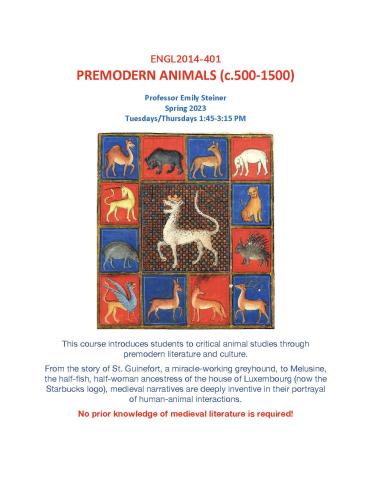Premodern Animals
From St. Cuthbert, whose freezing feet were warmed by otters, to St. Guinefort, a miracle-performing greyhound in 13th-century France, to Melusine, the half-fish, half-woman ancestress of the house of Luxembourg (now the Starbucks logo!), medieval narratives are deeply inventive in their portrayal of human and non-human animal interactions. Medieval authors asked practical questions about animals, such as what animals ate on the ark and whether they could go to heaven, but also more philosophical questions, such as whether reason, feelings, or language divide human and non-human animals, whether bees and ants fashion true political communities, why animals suffer, and whether it's morally better to be guided by “instinct" (non-human) than by “reason" (human).
Among the topics we will explore are the following: animals in early law; comfort and companion animals; vegetarianism across religious cultures; animal symbolism (the clever fox, the noble lion); the classification of species in relation to race, gender, and class; menageries and collecting, medieval notions of hybridity, trans-species identity, and interspecies relationships; art and the global traffic in animals (e.g., ivory, parchment); European encounters with "New World" animals; and the legacy of medieval animals in contemporary theory and media.
No prior knowledge of medieval literature is required.
Assignments: weekly posts, midterm exam, final paper/project, enthusiastic participation.
-
Medieval/Renaissance Concentration (AEMC)

 Department of English
Department of English
